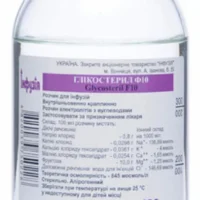Description
Stabizol (hydroxyethyl starch) Solution for Infusions 6% 500 ml. №10 Vial
Ingredients
- Active ingredient: Hydroxyethyl starch
- Other ingredients: Water for injections
Dosage
Dosage: As directed by a healthcare provider.
Do not exceed the recommended dose.
Indications
Indicated for: Stabizol is used for fluid volume replacement and plasma volume expansion.
Consult a healthcare provider for specific indications.
Contraindications
- Do not use if:
- Known hypersensitivity to hydroxyethyl starch
- Severe renal impairment
- Severe coagulopathy
Directions
Administration: Stabizol is for intravenous infusion only.
Follow healthcare provider’s instructions.
Scientific Evidence
Pharmacological Effects: Hydroxyethyl starch solutions like Stabizol increase plasma volume, aiding in hypovolemia and shock by enhancing tissue perfusion and oxygen delivery.
Clinical Trials: Research indicates the effectiveness of hydroxyethyl starch solutions in restoring intravascular volume and improving hemodynamic stability, particularly in critically ill patients.
Additional Information
- Monitor patients for signs of volume overload or impaired coagulation during Stabizol administration.
- Regularly assess renal function, especially in patients with existing renal conditions.
- Healthcare providers should evaluate fluid status, electrolyte balance, and coagulation profile before initiating Stabizol treatment.




